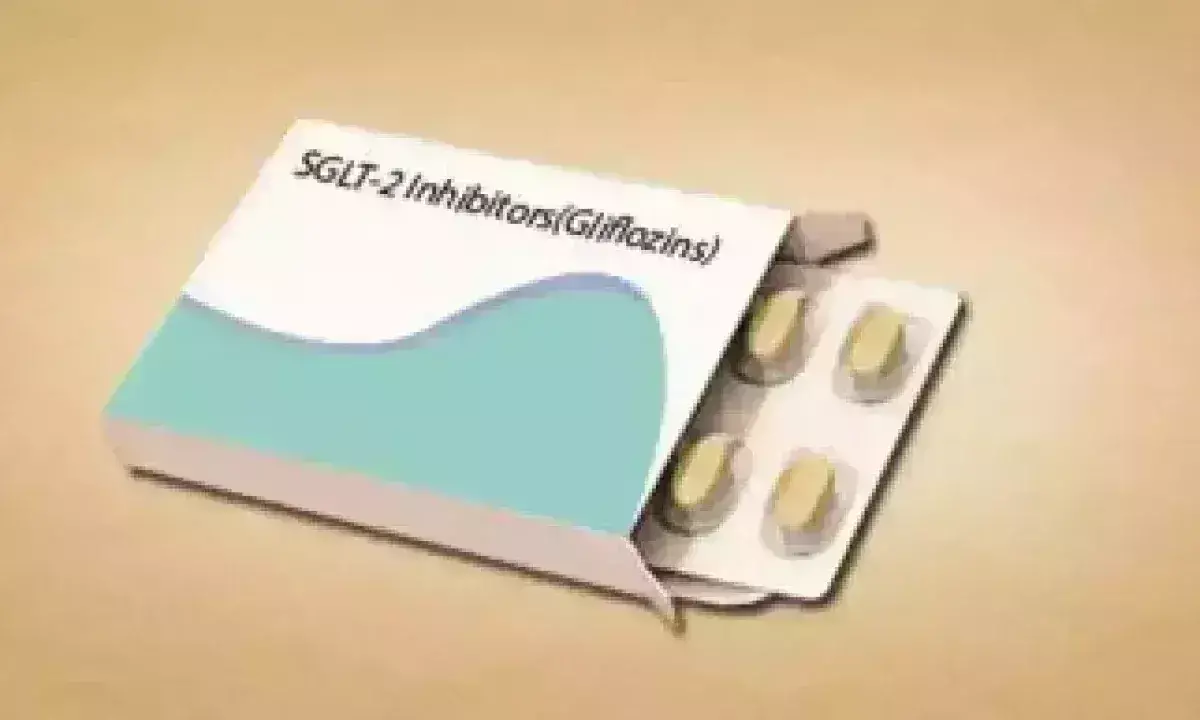- Home
- Medical news & Guidelines
- Anesthesiology
- Cardiology and CTVS
- Critical Care
- Dentistry
- Dermatology
- Diabetes and Endocrinology
- ENT
- Gastroenterology
- Medicine
- Nephrology
- Neurology
- Obstretics-Gynaecology
- Oncology
- Ophthalmology
- Orthopaedics
- Pediatrics-Neonatology
- Psychiatry
- Pulmonology
- Radiology
- Surgery
- Urology
- Laboratory Medicine
- Diet
- Nursing
- Paramedical
- Physiotherapy
- Health news
- Fact Check
- Bone Health Fact Check
- Brain Health Fact Check
- Cancer Related Fact Check
- Child Care Fact Check
- Dental and oral health fact check
- Diabetes and metabolic health fact check
- Diet and Nutrition Fact Check
- Eye and ENT Care Fact Check
- Fitness fact check
- Gut health fact check
- Heart health fact check
- Kidney health fact check
- Medical education fact check
- Men's health fact check
- Respiratory fact check
- Skin and hair care fact check
- Vaccine and Immunization fact check
- Women's health fact check
- AYUSH
- State News
- Andaman and Nicobar Islands
- Andhra Pradesh
- Arunachal Pradesh
- Assam
- Bihar
- Chandigarh
- Chattisgarh
- Dadra and Nagar Haveli
- Daman and Diu
- Delhi
- Goa
- Gujarat
- Haryana
- Himachal Pradesh
- Jammu & Kashmir
- Jharkhand
- Karnataka
- Kerala
- Ladakh
- Lakshadweep
- Madhya Pradesh
- Maharashtra
- Manipur
- Meghalaya
- Mizoram
- Nagaland
- Odisha
- Puducherry
- Punjab
- Rajasthan
- Sikkim
- Tamil Nadu
- Telangana
- Tripura
- Uttar Pradesh
- Uttrakhand
- West Bengal
- Medical Education
- Industry
Add-on SGLT2 inhibitors to ACE inhibitors enhance cardiorenal protection: Circulation

Canada: The addition of sodium-glucose cotransporter 2 inhibitor treatment to angiotensin-converting enzyme inhibitor leads to suppression of oxidative stress markers, expected GFR dip, declines in total peripheral resistance, and additive declines in blood pressure, says a recent study.
The study, published in the journal Circulation further adds that these changes are in tune with a protective physiologic profile characterized by related cardiorenal risk and lowering of intraglomerular pressure on the addition of SGLT2 inhibitor to conservative therapy in patients with type 1 diabetes with potential renal hyperfiltration.
David Z.I. Cherney, Toronto General Hospital, University of Toronto, Canada, and colleagues assessed the cardiorenal effects of SGLT2 inhibitor empagliflozin, 25 mg QD combined with an angiotensin-converting enzyme inhibitor, ramipril 10 mg QD in a mechanistic study in patients with type 1 diabetes with potential renal hyperfiltration.
The double-blind, placebo-controlled, crossover trial was completed by thirty patients (out of 31 randomized). Because of an unexpectedly low proportion of patients with hyperfiltration, the recruitment was stopped early. Measurement was obtained after each of the 6 treatment phases over 19 weeks: (1) baseline without treatment, (2) 4-week run-in with ramipril treatment alone, (3) 4-week combined empagliflozin-ramipril treatment, (4) a 4-week washout, (5) 4-week combined placebo-ramipril treatment, and (6) 1-week follow-up.
Glomerular filtration rate (GFR) after combination treatment with empagliflozin-ramipril compared with placebo-ramipril was the primary endpoint. Before randomization, GFR was corrected for ramipril treatment alone.
The following outcomes were measured at the end of the study phase under clamped euglycemia (4 to 6 mmol/L): tubular sodium handling, inulin (GFR) and para-aminohippurate (effective renal plasma flow) clearances, arterial stiffness, ambulatory blood pressure, noninvasive cardiac output monitoring, heart rate variability, markers of the renin-angiotensin-aldosterone system, oxidative stress, and plasma and urine biochemistry.
The study led to the following findings:
· Combination treatment with empagliflozin-ramipril resulted in an 8 mL/min/1.73 m2 lower GFR compared with placebo-ramipril treatment without significant changes to effective renal plasma flow.
· GFR decrease was accompanied by a 21.3 mL/min lower absolute proximal fluid reabsorption rate, a 3.1 mmol/min lower absolute proximal sodium reabsorption rate, and a 194 ng/mmol creatinine lower urinary 8-isoprostane level relative to placebo-ramipril combination treatment.
· Sodium-glucose cotransporter 2 inhibitor/angiotensin-converting enzyme inhibitor combination treatment resulted in additive blood pressure–lowering effects (clinic systolic blood pressure lower by 4 mm Hg; diastolic blood pressure lower by 3 mm Hg) in conjunction with a 94.5 dynes × sex/cm5 lower total peripheral resistance.
· There were no significant changes observed to ambulatory blood pressure, arterial stiffness, heart rate variability, or cardiac output with the addition of empagliflozin.
"Adding sodium-glucose cotransporter 2 inhibitor treatment to angiotensin-converting enzyme inhibitor resulted in suppression of oxidative stress markers, expected GFR dip, declines in total peripheral resistance, and additive declines in blood pressure," the researchers wrote in their study.
"These changes are consistent with a protective physiologic profile characterized by the lowering of intraglomerular pressure and related cardiorenal risk when adding an SGLT2 inhibitor to conservative therapy."
Reference:
Lytvyn, Yuliya, et al. "Renal and Vascular Effects of Combined SGLT2 and Angiotensin-Converting Enzyme Inhibition." Circulation, 2022, pp. 101161CIRCULATIONAHA122059150.
Dr Kamal Kant Kohli-MBBS, DTCD- a chest specialist with more than 30 years of practice and a flair for writing clinical articles, Dr Kamal Kant Kohli joined Medical Dialogues as a Chief Editor of Medical News. Besides writing articles, as an editor, he proofreads and verifies all the medical content published on Medical Dialogues including those coming from journals, studies,medical conferences,guidelines etc. Email: drkohli@medicaldialogues.in. Contact no. 011-43720751


